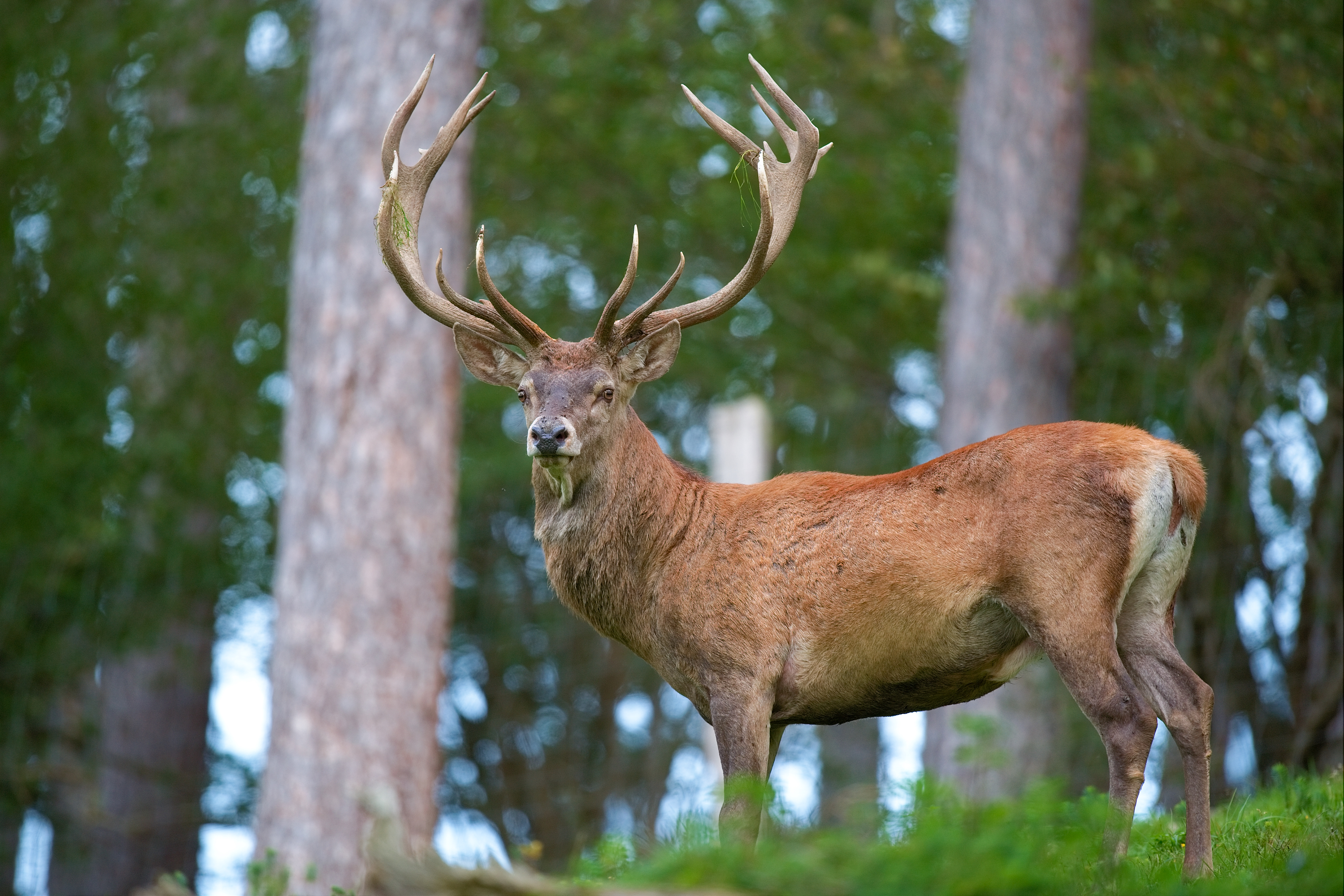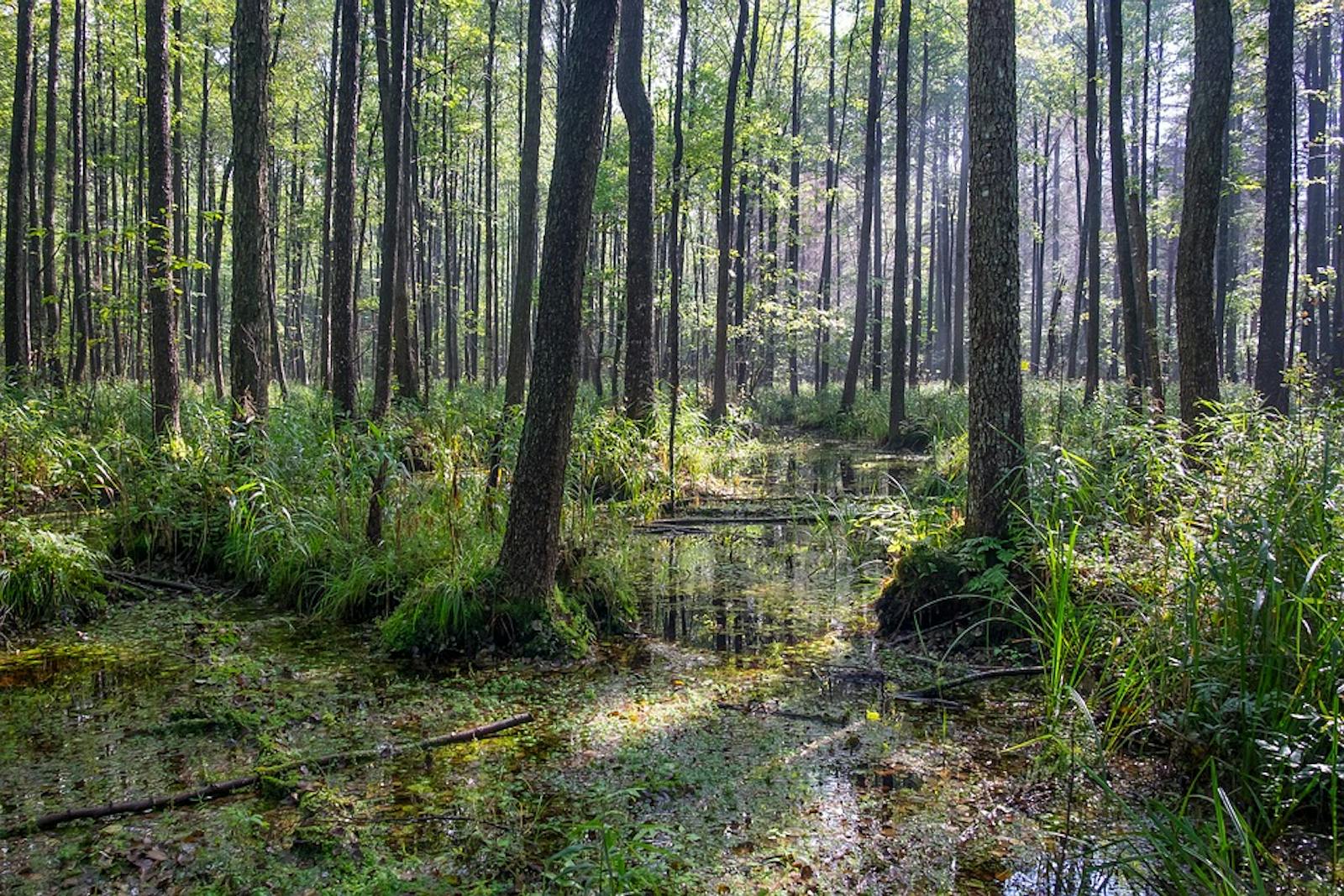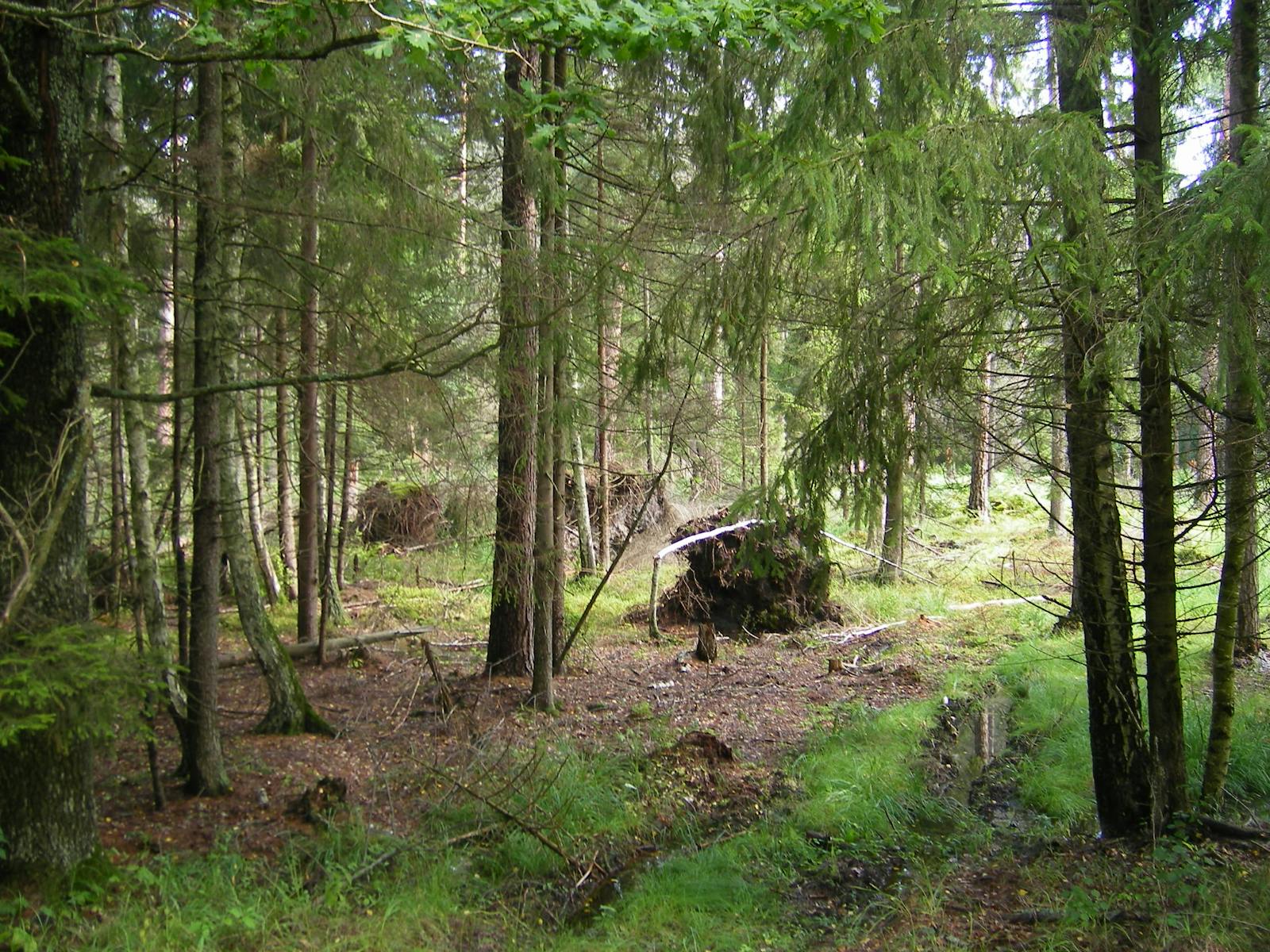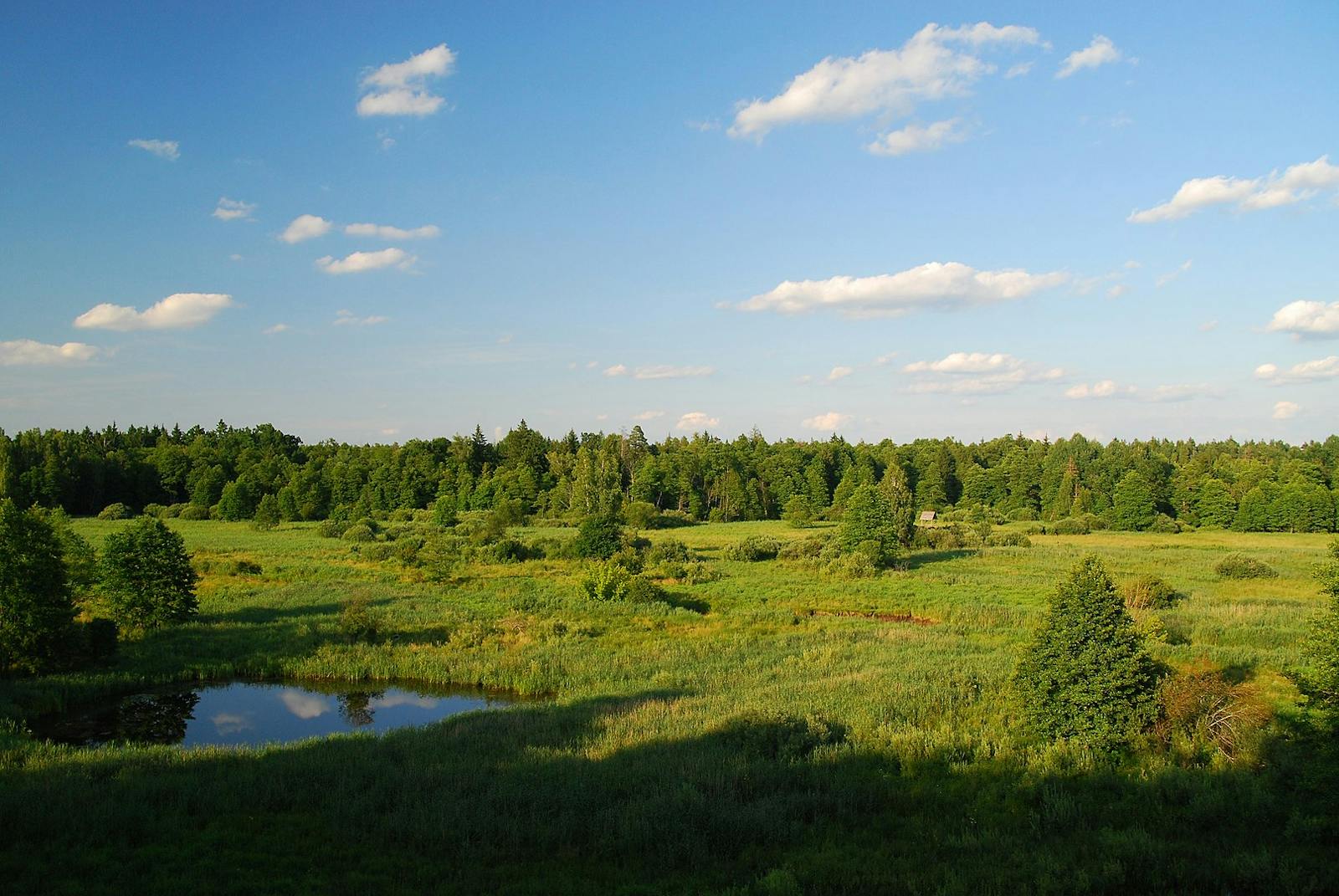Central European Mixed Forests
The ecoregion’s land area is provided in units of 1,000 hectares. The conservation target is the Global Safety Net (GSN1) area for the given ecoregion. The protection level indicates the percentage of the GSN goal that is currently protected on a scale of 0-10. N/A means data is not available at this time.
Bioregion: European Interior Mixed Forests (PA12)
Realm: Western Eurasia
Ecoregion Size (1000 ha):
73,291
Ecoregion ID:
654
Conservation Target:
33%
Protection Level:
6
States: Poland, Ukraine, Belarus, Germany, Romania, Russia, Lithuania, Czech Republic, Moldova, Austria
These expansive lowland plains play host to mystical oak forests, where remnant populations of European bison roam wild. Though much of the land now lay open as human-transformed meadows and pastures, swathes of natural woodland can still be found: the bewitching Białowieża Forest is one of the last large fragments of primeval forest in Europe. Greater-spotted and white-tailed eagles soar above its lofty canopies, where Norway spruce trees can reach an astonishing 50 m tall.
%20%20AdobeStock_246889383.jpeg)
The flagship species of the Central European Mixed Forests ecoregion is the European bison (Bison bonasus)
Traversing the lowland plains of Northern Europe, this ecoregion spans large areas of Poland, Belarus, Lithuania, and Ukraine; small portions extend into Germany, Romania, Moldova, Austria, and the Russian Federation. There is a continental climate, which is most pronounced towards the East. Natural forests contain oak, European hornbeam, lime, and beech, though Norway spruce and European silver fir are common in the North.
Where the ground is waterlogged, black alder, downy birch, and thickets of willow prosper. Extensively planted and managed for its commercial value, Scots pine is now the most common tree species in the region; in Western Poland, it can constitute up to 90% of forest stands.

Red deer. Image credit: Creative Commons
The white-backed woodpecker is a characteristic species of this ecoregion, requiring high-quality habitat: old-growth forest and large amounts of dead and dying trees. Its presence correlates well with other charismatic forest residents: brown bear, Eurasian lynx, grey wolf, and European bison. After World War I, European bison were extirpated across much of their home range, except for a small population in the Caucasus Mountains.
Numerous reintroduction programs have since returned these primeval beasts to almost all countries of this ecoregion, with some 4,500 animals roaming in 51 free-ranging herds,, Other species of conservation concern include spotted souslik, pond bat, barbastelle, and black grouse. The level of endemism here is low, though an interesting phenomenon is the occurrence of boreal species such as cloudberry and dwarf birch in the Northern climes, remnant survivors of previous glaciation events.
This ecoregion is both densely populated and heavily altered. Much of the original vegetation was destroyed by humans long ago, and it has been estimated that only 0.2% of pristine forests remain. Agriculture, plantations, and urbanization are the key drivers of habitat transformation, though widespread semi-natural habitats, such as traditional pastures, still support important plant and animal communities.
%20AdobeStock_133423302.jpeg)
European bison
Hunting is an economically important industry, and red deer, fallow deer, ducks, and pheasants are stocked in forests. Poland’s Białowieża Forest is a key protected area, harboring old-growth woodland, as well as abundant plants, fungi, and slime molds; it is famous for hosting the world’s largest free-ranging herd of European bison. The extensive Podolskie Tovtry National Park in Ukraine boasts spectacular canyons, lakes, and caves, whilst the mosaic of woodland and meadow in Germany’s Westhavelland is a refuge for great bustards.
Legal protection does not preclude threats, as logging and regular hunting are commonplace in most protected areas. Overstocking of game animals results in heavy pressure on forests and crops; the release of purpose-bred mallards has led to erosion and homogenization of wild gene pools. Ecosystems supported by semi-natural habitats are now threatened by more intense management in some areas, and abandonment of traditional management in others.
In Poland, management plans seek to strengthen ecological corridors by targeted forestation of agricultural land, and to aid bird and insect populations by increasing the amount of dead wood in forest ecosystems. Reforestation is also a target in Belarus and Ukraine.
European bison are threatened by low genetic diversity and the small size and isolation of reintroduced populations. Several countries are forming initiatives to establish large meta-populations, functionally linking existing herds and introducing new ones.
The priority conservation actions for the next decade will be to: 1) regulate the stocking of game animals to within habitat carry capacities; 2) introduce stricter measures to prevent overexploitation of wildlife within protected areas; and 3) prevent isolation of European bison populations by increasing connectivity of protected areas across the ecoregion.
Citations
1. European Environment Agency (2008). The Continental biogeographical region – agriculture, fragmentation and big rivers. Europe's biodiversity - biogeographical regions and seas.
2. Kuemmerle, T., Levers, C., Bleyhl, B., Olech, W., Perzanowski, K., Reusch, C. and Kramer-Schadt, S., 2018. One size does not fit all: European bison habitat selection across herds and spatial scales. Landscape ecology, 33(9), pp.1559-1572.
3. WWF. 2018. Central Europe: Austria, Belarus, Czech Republic, Germany, Lithuania, Moldovia, Poland, Romania, Russia, and Ukraine. [Online]. [Accessed 3rd June 2019]. Available from: https://www.worldwildlife.org/ecoregions/pa0412




.png?auto=compress%2Cformat&w=300)

